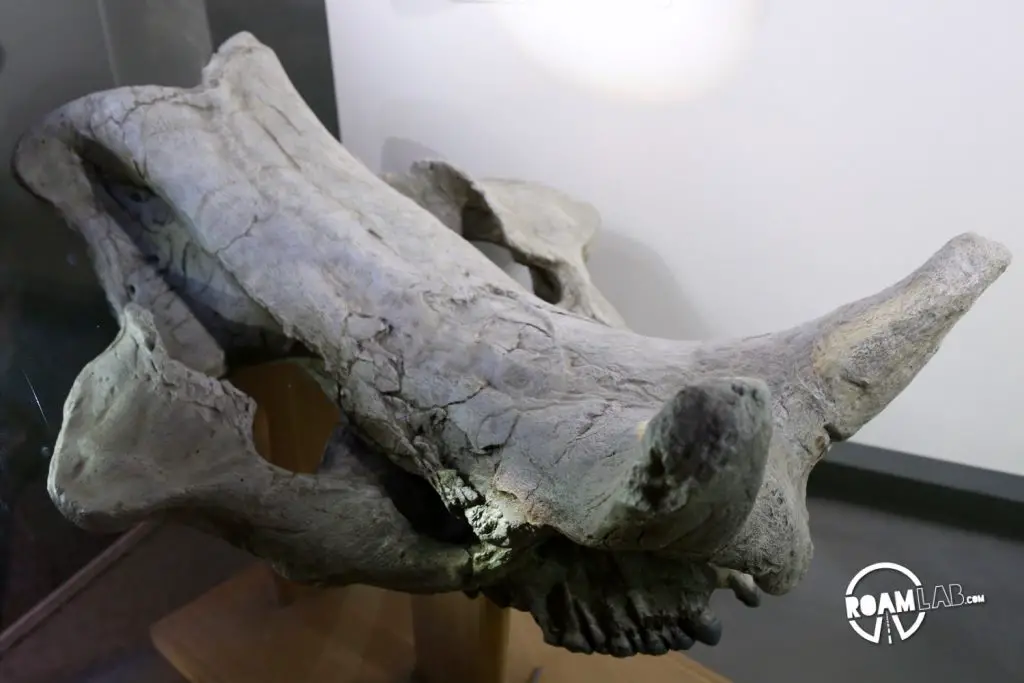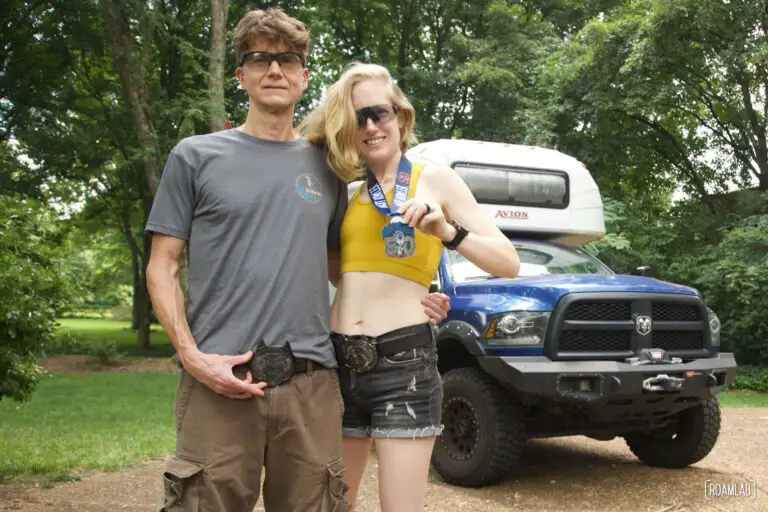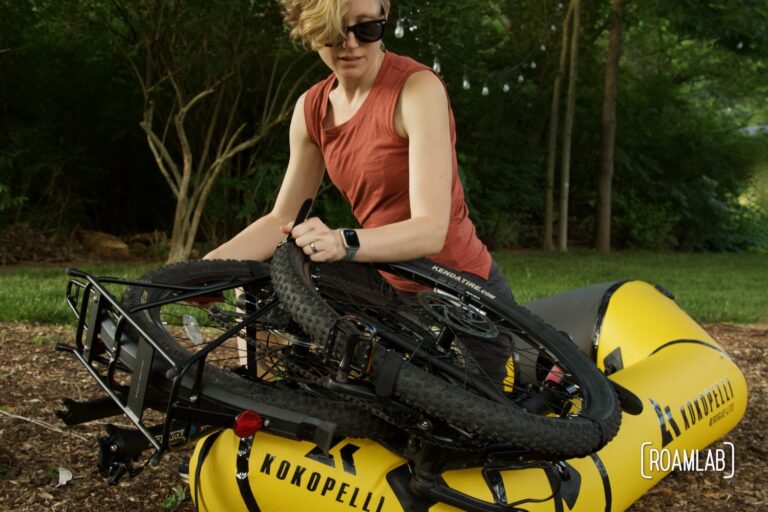Badlands National Park can get remarkably hot in the summer. Granted, it’s no Death Valley, but the idea of an extended hike in the midday heat is unwelcome. So, the quarter mile loop of the Fossil Exhibit Trail is an opportunity to get out and stretch ones legs without working up a sweat.
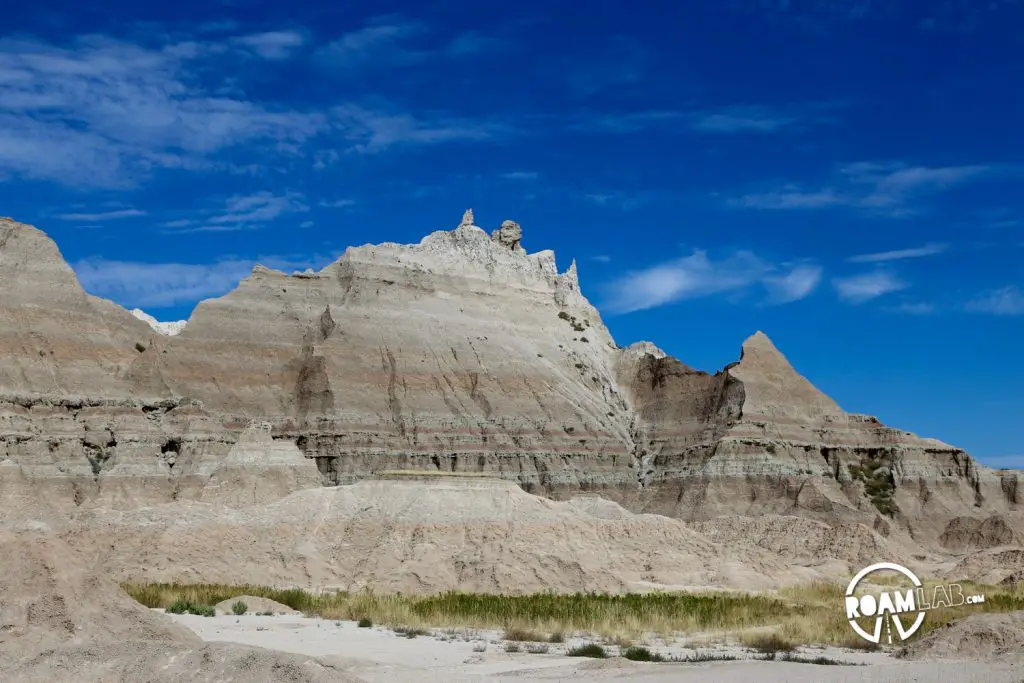
The sandstone buttes of The Badlands are rich with fossils from early mammals reaching back to sea life of the Cretaceous period, 75 to 67 million years ago. The Badlands were part of a shallow, sea that divided the North American landmass north to south during the Cretaceous period. Thus, this isn’t the location to spot T. rex bones but it has plentiful plesiosaur bones and fossilized ammonite shells as well as late Eocene and Oligocene fossils of camels, three-toed horses, oreodonts, antelope-like animals, rhinoceroses, deer-like mammals, rabbits, beavers, creodonts, land turtles, rodents and birds.
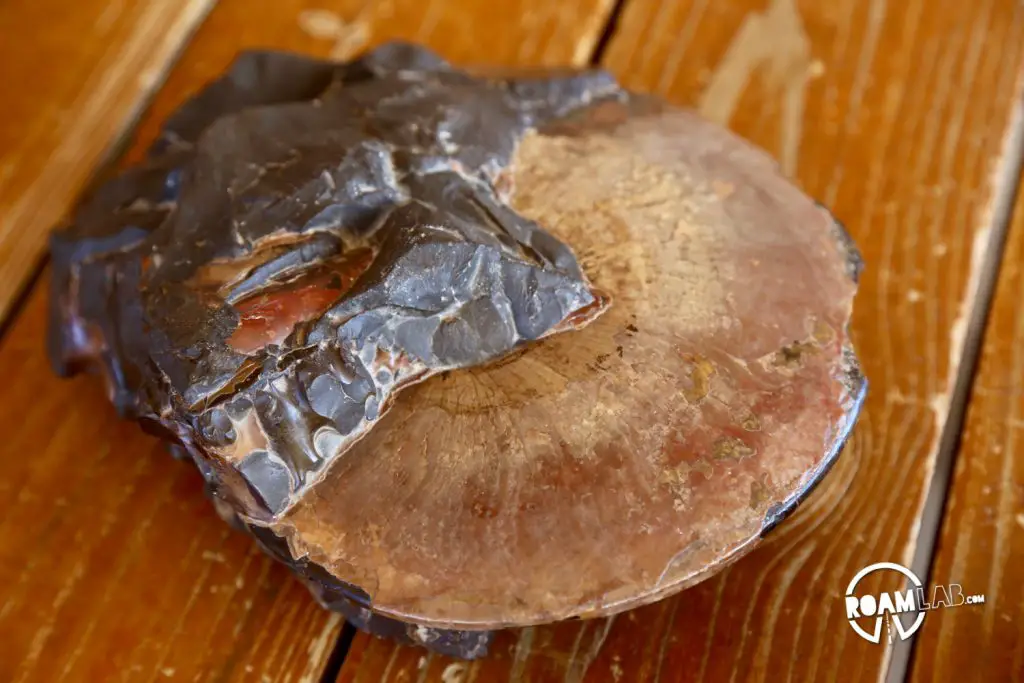
The boardwalk of the Fossil Exhibit Trail guides visitors along the geologic and paleontological history of the Badlands with plaques about the different ancient animals that once lived here and whose bones are discovered in the sandstone cliffs with impressive regularity.
In a way, the exhibit trail can be seen as more of a primer before visitors cross the street to hike the Castle Trail. Rain and other erosion gradually exposes new fossils that eagle-eyed visitors spot and report to park rangers. The Fossil Exhibit Trail is closer to a pull off rather than a proper trail but the educational displays can help visitors know what to look for as they hike the ten mile long Castle Trail between the Fossil Exhibit Trail and the Door and Window parking area. (More about Door and Window in an upcoming post) We didn’t hike it because the weather was just too hot for us to be interested in a ten-mile, one-way hike.
